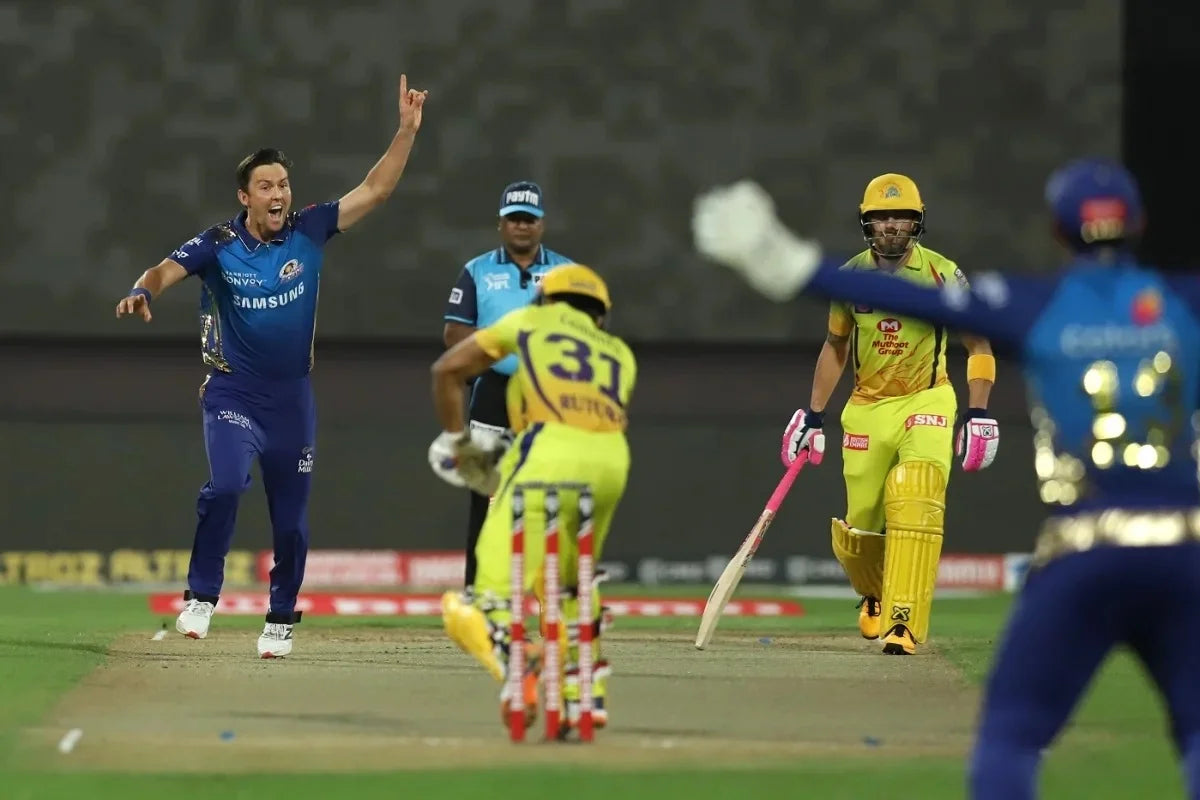Ever wondered why all the fielders are placed so close to a batsman at the start of an innings in a T20 or an ODI cricket match?
There are two reasons for this. First, at the start of the innings, the cricket ball is new and shiny, which makes it very easy for the bowlers to swing the ball in the air and trouble the batsmen. Understandably, the fielding team will place fielders close to the batsmen, inside the circle, specially in the slip positions to grab onto the mistimed shots and the edges that the batsman may play.
Second, there's a fielding restriction imposed on the fielding team, by the powerplay cricket rules. The advantage of these restrictions for a batsman is huge. These rules are to encourage the batsmen to play shots freely at the start of the innings and counter the swing of the bowler.

Credit: SportsCafe
What is a powerplay in cricket?
The term has become very popular, in both T20 and ODI cricket format. What it offers to the players and the crowd, it has undoubtedly given the sport a level of excitement like never before.
It is the fielding restrictions that are imposed upon the fielding team for a set number of overs in the start of an innings in a limited overs cricket match. Only two fielders are permitted outside the 30-yard circle for the first 10 overs of an ODI match and the first 6 overs of a T20 match. Understand every cricket fielding positions to understand such restrictions better. Let’s Understand More about this in detail:

Powerplay in T20 cricket:
T20 fielding restriction rules are pretty straightforward and easy to understand!
- For the first six overs of the match, only two fielders are allowed outside of the 30-yard area around the batsman.
- After the first six overs till the twentieth over, up to five fielders can be positioned outside of the 30-yard area.
- No more than five fielders can be on the leg side of the field at any given time, be it inside the 30 yard circle or beyond that.
-
The IPL Powerplay rules are the same as the T20 ones.

Credit: CricketNMore
Powerplay Rules in ODI Cricket:
In ODI cricket, the International Cricket Council (ICC) enforced the fielding regulations in 2005. And since then there have been many amendments in these rules. ODI fielding restrictions are a crucial component of the game, and strategically structuring an innings around them can mean the difference between success and failure.
Do you know how many powerplays there are in an ODI?
In One Day International cricket, there are three restriction periods, P1, P2, P3 where the fielding team has restrictions on how many fielders they can have outside the 30-yard circle.
-
Powerplay 1 (0-10 Overs)
A maximum of two fielders can be placed outside the 30-yard circle.
-
P 2 (10-40 Overs):
During the middle overs, a maximum of four fielders can be placed outside the 30-yard circle.
-
P 3 (40-50 Overs):
During this last part, from the 41st over till the end, a maximum of five fielders can be placed outside the 30-yard circle.
It is important to note that in case of weather issues like rain, these rules may be changed by the match referee and umpire.
Strategies and Impact for Batsmen and Bowlers:
The powerplay has an impact on both batsmen and bowlers.
For bowlers:

Credit: ESPN Cricinfo
-
Right Bowling Strategy:
Bowling well with the right strategy is the way to go for in the powerplays. Always try to pitch the ball according to the field set or try to set the field according to the line and length of the deliveries. The right approach to go about will be to hit the good and full length, swinging outwards and, so there is always a chance of picking up an edge. An unusual in swinger aimed at the pads or wickets delivery will surely catch the batsman off guard! Get ZAP Cricket Balls and swing your way through the batsman's defenses.
-
Field Placement:
Field placement is extremely important. You cannot place 5 fielders on the off side and bowl to the batsman on his legs. You’ll surely leak runs that way. It’s very important to choke those singles during the field restrictions. Also, it’s important to bowl according to the set up. Trap the batsmen and make them work hard for every single run.
-
Pick Early Wickets:
The most important task is picking up wickets in the early stages of the game. The entire momentum and dynamic of the match changes if your team is able to do so! The correct field setup combined with the right line and length of your deliveries will surely get you a wicket.
For batsmen:

Credit: TV9 Bharatvarsh
-
Aggressive Approach:
Powerplay is the best time for batsmen to score runs quickly and take up the momentum for the team. Just clear the fielders in the inner circle and you’re good to go. But always remember, playing every ball to the merit and mindfully is important. If you want to take risk, do it in a calculated way. Always pay respect to good deliveries, but once the bowler makes a mistake, make them pay for it, by hitting the ball out of the park. ZAP Cricket bats can be your perfect partner in the powerplay, be it playing those classic straight drive or cover drives or hit big sixes and ball out of the park!
-
Playing to the Field:
Scoring runs in the fielding restrictions is all about weaving through the smallest gaps. So, paste an image of the field set up, think about what length the bowler is going to bowl according to the set up, and try to guide the ball through gaps for boundaries.
-
Building a Partnership:
Not losing wickets is extremely important in the early overs. As said earlier, it changes the momentum and ultimately the dynamic of the match. If the bowling team is doing well with their execution of strategies, stay calm and just try to play with the right batting technique and rotate the strike to build a long partnership. Taking up unnecessary risk is stupidity.
What if Powerplay rules are not followed?
The fielding restriction adds a unique dynamic to the game and if it was never introduced, the interesting first over of a limited overs of a match would be very pale and boring. Batsmen would not have the freedom to score runs and bowlers would also take up a defensive approach leading to a conservative game. The absence of powerplay would alter the strategies and tactics employed by both teams throughout the innings. One interesting thing is that if the fielding team does not follow these restrictions and if they have extra fielders outside the 30 yard circle, when a delivery is being bowled, the umpire will call it a no ball and the batting team will get a free hit on the next ball.

Credit: Cricbuzz
FAQ:
The highest score in the first 6 overs in the IPL is 105 runs, by Kolkata Knight Riders, where openers Chris Lynn and Sunil Narine tore up Royal Challengers Bangalore bowlers, setting up this record.
Rajasthan Royal scored only 14 runs for the loss of 2 wickets against Royal Challengers Bangalore in the 2009 edition of the Indian Premier League.
South Africa scored 102 without any loss in 6 overs against the West Indies while chasing 253 in a T20 match in 2023 setting the highest score in the first 6 overs.
Martin Guptill and New Zealand thrashed Sri Lanka bowlers by scoring 118 runs in the first 10 overs in an ODI in 2015.
The Test Format emphasizes patience, skill, and endurance over quick scoring, allowing for longer battles between bowlers and batsmen. That’s the reason it does not feature the fielding restrictions.



Share:
Inside the World of BCCI: Decoding the Cricket Giants
Pink Ball Cricket: Modernizing the Classic Test Format